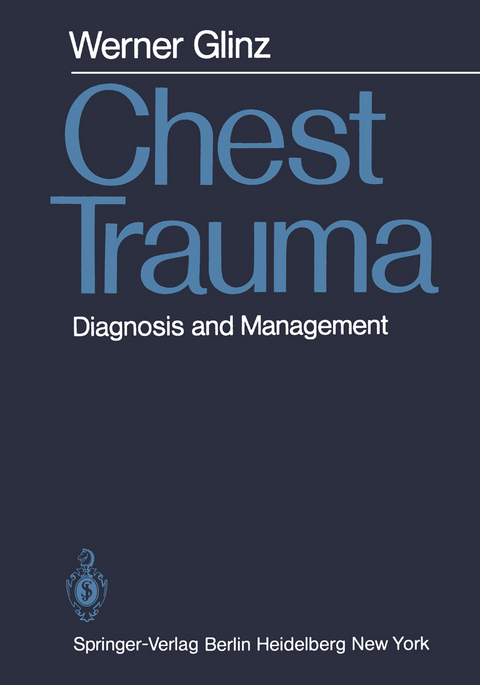
Chest Trauma
Springer Berlin (Verlag)
978-3-642-67859-2 (ISBN)
I General Considerations for the Assessment and Treatment of Thoracic Injuries.- 1 Initial Considerations in the Management of Severe Thoracic Injury.- 2 The Patient with Additional Injuries in Other Parts of the Body.- 3 Interpretation of the Chest Roentgenogram.- 4 Respiratory Insufficiency.- 5 Indications for Operation in Blunt Thoracic Trauma.- 6 Operative Approaches.- 7 Special Considerations in Penetrating Chest Injuries.- 8 Aspects of Intensive Care of Patients with Thoracic Injuries.- 9 Physiotherapy of Patients with Thoracic Injuries.- II Diagnosis, Clinical Significance, and Treatment of Specific Injuries.- 10 Rib and Sternum Fractures.- 11 Pneumothorax and Hemothorax.- 12 Traumatic Emphysema.- 13 Lung Injuries from Blunt Trauma.- 14 Tracheal and Bronchial Injuries.- 15 Injuries to the Esophagus.- 16 Injuries to the Heart by Blunt Trauma.- 17 Penetrating Wounds of the Heart.- 18 Injuries of the Great Intrathoracic Vessels.- 19 Injuries of the Diaphragm.- 20 Other Injury Patterns and Consequences of Injury in Thoracic Trauma.
| Erscheint lt. Verlag | 15.12.2011 |
|---|---|
| Übersetzer | G.H.Sr. Mundinger, G.H.Jr. Mundinger |
| Zusatzinfo | XII, 306 p. |
| Verlagsort | Berlin |
| Sprache | englisch |
| Maße | 170 x 244 mm |
| Gewicht | 560 g |
| Themenwelt | Medizinische Fachgebiete ► Chirurgie ► Herz- / Thorax- / Gefäßchirurgie |
| Schlagworte | Assessment • Cardiac Surgery • Cardiovascular • Head • heart • Lung • Medicine • patients • respiration • Surgery • therapy • Thoracic Surgery • Thoraxverletzung • Trauma • Treatment • vascular surgery |
| ISBN-10 | 3-642-67859-9 / 3642678599 |
| ISBN-13 | 978-3-642-67859-2 / 9783642678592 |
| Zustand | Neuware |
| Informationen gemäß Produktsicherheitsverordnung (GPSR) | |
| Haben Sie eine Frage zum Produkt? |
aus dem Bereich



